Personalised web accessibility assessment using virtual user models
- Nikolaos Kaklanis, Information Technologies Institute, Centre for Research and Technology Hellas, Thessaloniki, Greece, nkak@iti.gr
- Konstantinos Votis, Information Technologies Institute, Centre for Research and Technology Hellas, Thessaloniki, Greece, kvotis@iti.gr
- Dimitrios Tzovaras, Information Technologies Institute, Centre for Research and Technology Hellas, Thessaloniki, Greece, Dimitrios.Tzovaras@iti.gr
1. Problem Description
The “Design for All” has become a very popular principle during the last years. However, the development of products, services and applications that are accessible by all people including any possible kind of disability is a very difficult task. Thus, new “User Sensitive Inclusive Design” methodologies appeared, in order to enforce the development of accessible products with special focus on specific target groups of users. Following the “User Sensitive Inclusive Design” principles, the present paper introduces the WaaT, a software tool that performs personalized accessibility assessment of web applications using virtual user models (VUMs), according to the Web Content Accessibility Guidelines (WCAG) 2.0 as well as the WAI-ARIA guidelines.
2. Background
There is a large number of software tools performing accessibility evaluation of web sites based on the guidelines of popular accessibility standards. Tools, such as the WAVE [11], HERA [1], AChecker [4] and Worldspace FireEyes [3] have been developed based mainly on the guidelines of WCAG 1.0, WCAG 2.0 and Section 508.
Although there are many existing tools performing accessibility evaluation of web applications, there is a missing point: the personalized accessibility evaluation according to the specific needs/preferences of a user. This is extremely valuable considering that people with disabilities have often special needs varying from person to person, even if they are having the same disability. Towards this direction, some efforts have been done but either they do not support the latest WCAG 2.0 standard or they cannot efficiently describe the user. For instance, in [9] a framework that performs accessibility evaluation of web pages according to the individual requirements of users with disabilities is presented. The Composite Capabilities/Personal Profiles (CC/PP) W3C standard is used to describe user’s preferences and the use of assistive technologies (ATs). The specific approach focuses on the use of assistive technologies and maps these technologies with accessibility guidelines. However, the interaction limitations of the user are not described sufficiently. The present paper proposes a personalized accessibility assessment approach using VUMs that can efficiently describe user’s needs and preferences.
3. Approach
3.1. From a VUM to WCAG 2.0 guidelines
Within the premises of the ACCESSIBLE EC FP7 project, the WaaT tool [7] has been developed, based on the Harmonised Methodology (HAM) [2] that has been introduced within the same project. In this paper, we present an extension of the WaaT tool that enables the personalised accessibility assessment of any web page using the VUMs proposed by the VERITAS EC FP7 project. The VERITAS project focuses on user modelling of people with disabilities and also participates in the VUMS cluster of projects [10].
The VERITAS VUM [5] describes in detail the physical, cognitive and behavioral user characteristics, including possible disabilities, functional limitations, the affected/ problematic (due to the disabilities) tasks as well as the use of assistive devices. Its implementation is based on an extension of UsiXML [6]. More specifically, two new models have been introduced and added to UsiXML’s uiModel (Figure 1):
a) the disabilityModel and
b) the capabilityModel
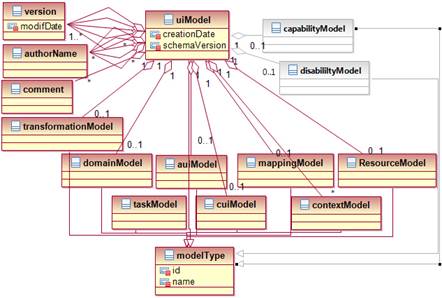
Figure 1: uiModel – UML class diagram
The disabilityModel describes all the possible disabilities of the user as well as the affected by the disabilities tasks and the use of assistive devices (Figure 2). The capabilityModel describes in detail the physical, cognitive and the behavioral/ psychological user characteristics.
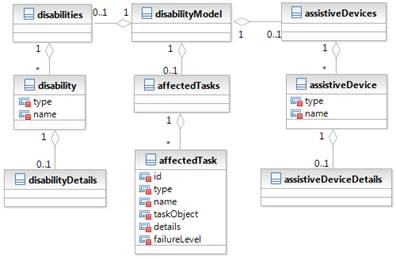
Figure 2: disabilityModel – UML class diagram
On the other hand, the Accessible Harmonized Methodology (HAM) is a human oriented methodology that correlates various common disability types, functional limitations and assistive devices with the guidelines of WCAG 2.0. The disability type and ICF classification have been placed in the kernel of the methodology as ICF classification provides a concrete classification of impairments of the body structures, which ensures no overlapping. By combining the information contained in the disabilityModel of the VERITAS VUM with the Harmonised Methodology, we finally conclude to a linkage between a VUM and the corresponding WCAG 2.0 guidelines, as depicted in Figure 3.
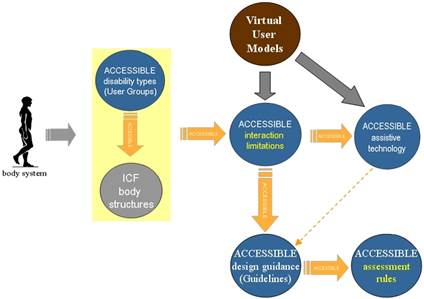
Figure 3: Virtual User Models position in HAM
3.2 Use case
In order to show how the WaaT tool performs personalised accessibility evaluation of web applications using VUMs, we present a use case in which the “http://www.google.com” URL has been examined using two different VUMs representing a blind user (Table 1) and a user with moderate hearing loss (hypoacusis) (Table 2), correspondingly. Due to space limitations, no further details are presented to describe the steps of the evaluation process. Instead, the results of the evaluation process are present directly. The accessibility score (based on the Web Accessibility Barrier (WAB) metric [8]) resulted for the first VUM (representing a blind user) was 59.5%. Figure 4 presents an assessment overview table, including the violations found. Figure 5 shows an example of an accessibility violation found for the blind user, including a submit button without label or “title” attribute.
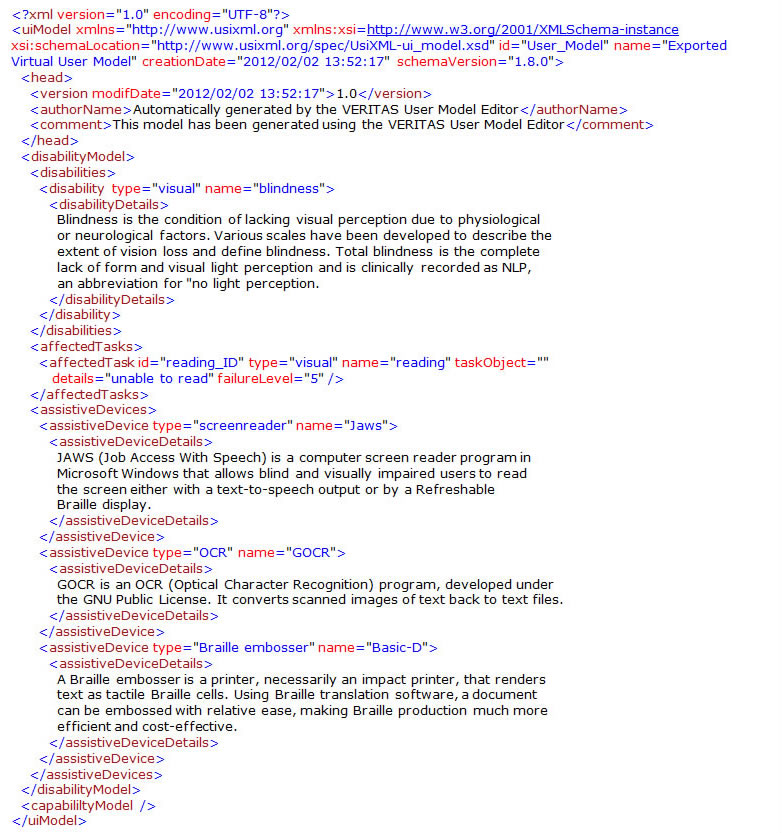
Table 1: VUM representing a blind user
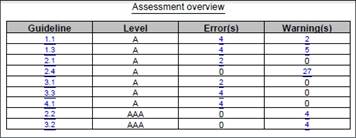
Figure 4: Assessment overview for the VUM representing a blind user
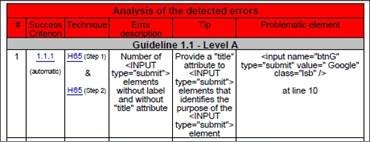
Figure 5: Accessibility violation for the blind user
When the assessment of the same web page was performed using the second VUM (representing a user with hearing problems), the site was found to be fully accessible for the specific user.
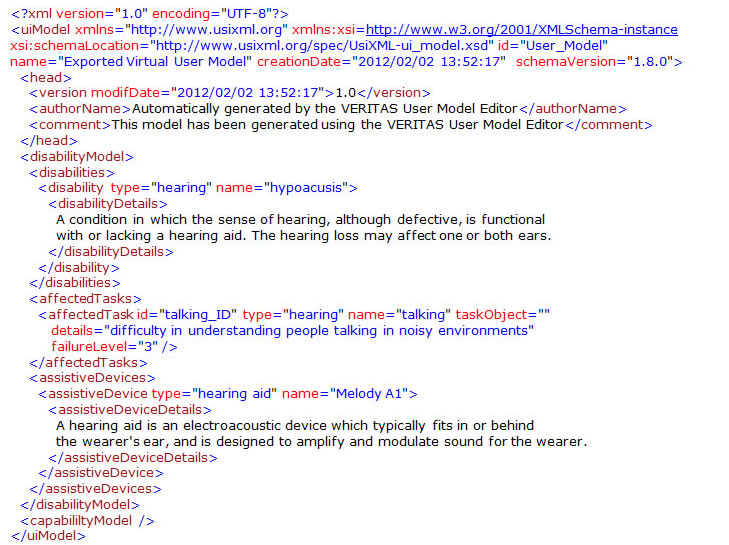
Table 2: VUM representing a person with hypoacusis
The WaaT tool provides a variety of assessment reports, including PDF, EARL and HTTP RDF/XML.
4. Challenges
One limitation of the proposed approach is that HAM does not take into account the degree of each disability. Thus, VUMs including the same disabilities but in different degrees (mild/moderate/severe), within WaaT are treated in a same way, which is not totally valid, as functional limitations depend (in general) on the degree of the disability.
It has also to be mentioned that the validity of the accessibility assessment results is strongly dependent on the validity of the mapping between disabilities/ATs and the WCAG 2.0 guidelines included in HAM.
5. Outcomes
The use of virtual models in the accessibility assessment of web application is expected to have a great potential, as it enables the personalized accessibility, which is of great importance, especially when web applications target to specific user groups.
Moreover, the proposed approach enables the sharing of information and knowledge between different disciplines. For instance, web designers can use directly VUMs created by user modeling experts, without the need of knowing anything about user models.
6. Future Research
The Harmonised Methodology currently supports a set of common disabilities and assistive technologies and their mapping with the WCAG 2.0 guidelines. More disabilities and more assistive technologies may be supported in the future, to cover the needs of additional population groups, represented by the corresponding VUMs.
Acknowledgements
This work is supported by the EC co-funded project VERITAS (FP7 - 247765) and referencing work done in the ACCESSIBLE project (FP7 – 224145).
References
- Benavidez, C., Fuertes, J.L., Gutierrez, E., Martinez, L. (2006). Semi-automatic evaluation of web accessibility with HERA 2.0. Lecture Notes in Computer Science. 4061, pp. 199-206.
- Chalkia, E., Bekiaris, E. (2011). A Harmonised Methodology for the Components of Software Applications Accessibility and its Evaluation. In: Stephanidis, C. Universal Access in Human-Computer Interaction. Design for All and eInclusion. Berlin Heidelberg: Springer. pp. 197-205.
- Deque Systems. (2011). Worldspace FireEyes. Available: http://www.deque.com/products/worldspace-fireeyes. Last accessed 14th Feb 2012.
- Gay, G., Qi Li, C. (2010). AChecker: open, interactive, customizable, web accessibility checking. In: Proceedings of the International Cross-Disciplinary Conference on Web Accessibility, W4A2010, Raleigh, USA, April 2010, DOI= http://dx.doi.org/10.1145/1805986.1806019.
- Kaklanis, N., Moschonas, P., Moustakas, K., Tzovaras, D. (2012). Virtual User Models for the elderly and disabled for automatic simulated accessibility and ergonomy evaluation of designs, Universal Access in the Information Society, Special Issue: Accessibility aspects in UIDLs, Springer, 1-23.
- Limbourg, Q., Vanderdonckt, J. (2009). Multi-Path Transformational Development of User Interfaces with Graph Transformations. In: Seffah, A., Vanderdonckt, J., Desmarais, M. Human-Centered Software Engineering. London: Springer. pp. 109-140.
- Oikonomou, T., Kaklanis, N., Votis, K., Tzovaras., D. (2011). An accessibility assessment framework for improving designers experience in web applications. In: Stephanidis, C. eds. Proceedings of the 6th international conference on Universal access in human-computer interaction: design for all and eInclusion. Berlin, Heidelberg: Springer. pp. 258-266.
- Parmanto, B., Zeng, X. (2005) Metric for Web Accessibility Evaluation. Journal of the American Society for Information Science and Technology 56(13), 1394–1404.
- Vigo, M., Kobsa, A., Arrue, M. and Abascal, J. (2007) User-tailored Web Accessibility Evaluations. In HT ’07: Proceedings of the 18th conference on Hypertext and hypermedia, New York, USA, ACM, pp. 95–104.
- VUMS White Paper. (2012). Available: http://www.veritas-project.eu/vums/wp-content/uploads/2012/07/White-Paperv2.pdf. Last accessed 27 June 2013.
- WAVE - Web Accessibility Evaluation Tool (2012). Available: http://wave.webaim.org/toolbar/. Last accessed 14th Feb 2012.